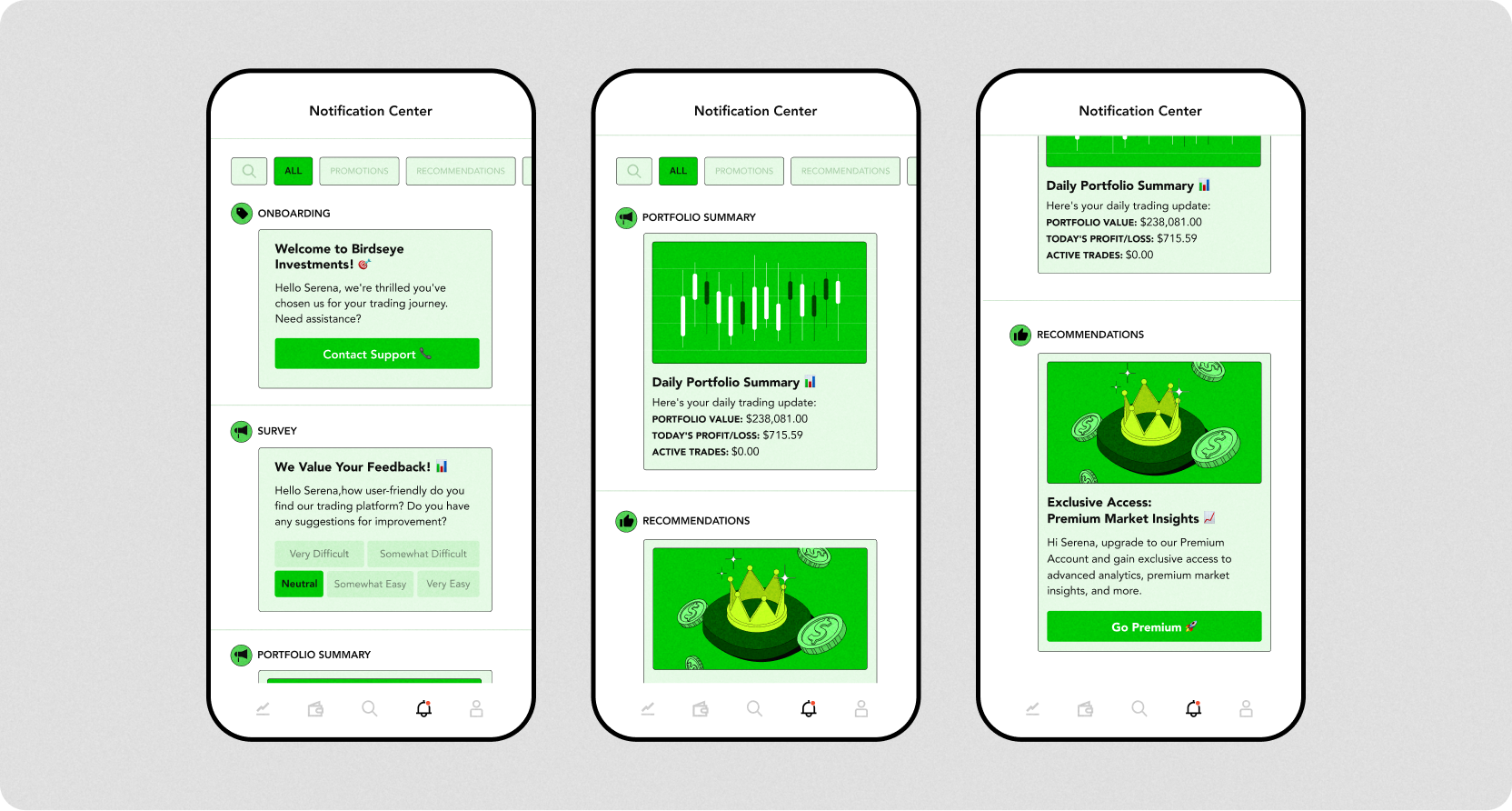App retention benchmarks broken down by industry

Understanding user retention rate in 2024
Retention rate is one of the most important stats for measuring the success of your app. Why? A healthy user retention rate indicates that you’re converting new signups into committed users. A low user retention rate suggests new app users don’t see enough value to stick around.
“Understanding your app’s retention rate, and how it stacks up to the benchmark rates seen in your vertical and across the larger mobile ecosystem, is an essential part of figuring out your customer engagement and retention strategy,” says Todd Grennan, Senior Content Producer at Appboy.
The best way of gauging your performance is by comparing your own stats with app retention benchmarks in your industry, and then across the larger mobile market.

8 major support hassles solved with AI agents
What is the user retention rate?
Your user retention rate is the percentage of people who continue to use your product or app over a period of time after downloading or signing up. This metric provides insight into the app user’s engagement and loyalty.
Note that a high retention rate indicates that an app is effectively meeting user needs and maintaining their interest. Retention rate is the inverse of user churn—if your 90-day retention rate is 25%, your app churn rate would be 75%.
How to calculate retention rate: Cohort analysis
The formula for calculating the user retention rate over a given period is:
Retention rate = (Number of users at the end of the period / Number of users at the start of the period) × 100
This formula gives you the retention rate as a percentage. The "Number of users at the start of the period" refers to the users who have installed the app and are active at the beginning of the measured period, while the "Number of users at the end of the period" refers to those still actively using the app at the end of the period. You can define what constitutes ‘active users’ based on your business needs and resources.
The time period you choose to analyze - weekly, monthly, quarterly, or yearly - determines the cohort (for example, a 30-day or 31-day cohort). Cohort analysis helps you determine how users who downloaded your app around the same time compare with other clusters of users. Analyzing user retention rate by cohort allows you to gain a deeper understanding of user behavior, and to determine possible causes for significant changes or trends.
For example, if your app had 1,000 users at the start of the month, and 700 of those users are still actively using the app by the end of the month, the 30-day retention rate would be calculated as follows:
Retention Rate = (700 / 1000) × 100
Retention Rate= 70%

Reinvent CX with AI agents
What is the app churn rate?
User churn rate in the context of mobile apps quantifies the percentage of users who discontinue using an app within a specified time frame. In other words, the churn rate reflects the rate at which an app loses users over a specified period.
A high churn rate may indicate issues with user satisfaction, app functionality, or competitive disadvantages, necessitating targeted improvements to enhance user retention and overall app performance.
How to calculate app churn rate
The churn rate for mobile apps measures the proportion of users who stop using an app within a given timeframe. We have already seen that user retention rate is the inverse of user churn rate.
The formula for calculating churn rate is given by:
Churn rate = (Number of users lost during the period / Number of users at the start of the period) × 100
The "Number of users lost during the period" refers to the users who were active at the start but not at the end of the period.
For example, if your app had 1,000 users at the start of the month, and 300 of those users are not using the app by the end of the month, the 30-day churn rate would be calculated as follows:
Churn rate = (Number of users lost during the period / Number of users at the start of the period) × 100
Churn rate = (300 / 1000) x 100 = 30%
SInce we have seen that churn rate is the inverse of retention rate, if the app retention rate is 70%, the app churn rate would be 30%.
Why is calculating the user retention rate important? Top 5 advantages
Keeping track of your user retention rate and comparing it with the competition is crucial to understanding the value users derive from your product or app. Here are the top 5 reasons that your user retention rate is critical metric to track.
Indicator of product value: User retention rate measure the stickiness of your product. After all, installs are irrelevant unless you retain those new users. A strong retention rate serves as evidence that a product or service resonates with its target audience, fulfilling user needs and expectations. It also validates the app's value proposition and its alignment with market demands.
Financial sustainability: A high user retention rate is closely tied to the financial health of a business. Retained users are more likely to contribute to revenue over time through repeat purchases, subscriptions, and engagement with monetized features. Since acquiring new users can be significantly more expensive than retaining existing ones, a high retention rate enhances financial sustainability by optimizing acquisition costs and boosting revenue.
Customer Lifetime Value (CLV) enhancement: High user retention rates directly correlate with increased Customer Lifetime Value (CLV), which quantifies the total revenue a business can expect from a single customer throughout their relationship. Enhancing CLV is crucial for long-term profitability and growth, as it allows for more efficient allocation of marketing and operational resources.
Insights for product development and improvement: Retained users provide ongoing engagement data, feedback, and behavioral insights that are invaluable for iterative product development and enhancement. Tracking your retention rate is also useful for revealing growth trends and forecasting potential revenue. The metric can even inform your high-level planning.
Marketing and strategy optimization: Understanding the drivers behind user retention enables businesses to refine their marketing strategies, targeting efforts more effectively, and improving communication with their audience. By focusing on what keeps users engaged, companies can allocate their marketing budgets more efficiently, achieving better outcomes with lower investment.

Elevate your app with in-app communication APIs for the entire customer journey.
5 disadvantages of the user retention rate
The user retention rate is a great indicator of product value but is far from foolproof. Here are some disadvantages to keep in mind.
Lack of granularity: The user retention rate provides a high-level view of user engagement but lacks the granularity needed to understand the specific reasons behind user retention or churn. It doesn't pinpoint which features or aspects of the app are most valuable to users or identify specific pain points that lead to disengagement.
Temporal limitations: Retention rate typically focuses on specific time intervals (e.g., 30-day, 60-day, 90-day retention), which might not fully capture long-term user behavior or the lifetime value of a user. Additionally, remember that tracking aggregate retention distorts present trends. If you make UX improvements or add features, the user retention rate may increase. If you’re only tracking the aggregate rate, instead of cohorts, you may not notice a change. This is why it’s critical to conduct cohort analysis.
Potential misinterpretation: High retention rates are generally seen as positive, but without context, they might be misleading. For example, a high retention rate in an app with a small user base may not be as impactful as a slightly lower retention rate in an app with a significantly larger user base.
Overemphasis on existing users: A strong focus on optimizing for user retention may inadvertently lead to neglecting the acquisition of new users or failing to explore broader market opportunities. While retaining existing users is crucial, a balance is needed to ensure that growth strategies also consider user acquisition and expansion into new markets
Resource intensive: Improving retention rates often requires significant investment in user experience research, product development, and marketing strategies.
What are the key benchmarks for app retention?
...and what is a good app retention rate?
Considering the number and variety of apps available today on iOS and Android, from third-party messengers to business to productivity to social media, it’s difficult to pin a baseline app retention rate across all categories and platforms.
However, we can combine data from research studies to get a solid figure.
In a study of more than 1,000 apps on iOS and Android, Statista found that the average day-one retention rate is 25.3%
Among apps using Adjust technology, the average day-one retention rate was 26.5% across all verticals
AppsFlyer took a sample of 6 billion installs and found an average day-one retention rate of 24.33%.
In other words, around 25% is an average benchmark for day-one retention.
A key milestone in user loyalty is the end of week one. Compared to the first day after installation, day seven retention rates tend to be much lower, but many developers run retargeting campaigns to encourage further engagement. According to Adjust, the average day-seven retention rate is 12%.
Regarding long-term retention, it’s a good idea to look at day 30. Market research shows that if someone sticks around this long, there is a good chance they will continue using your app beyond day 30.
In terms of benchmarks, here are some average day 30 retention rates:
5.7% from Statista
6.5% from Adjust
3.36% from AppsFlyer
So, a good benchmark for day 30 app retention is around 5% across all verticals.
Trends in the mobile app user retention rate
Of course, global averages only provide a rough target for app retention. To understand whether your app is performing well or underachieving, it’s necessary to take a closer look at the numbers.
According to Business of Apps, app retention is currently slightly higher on iOS than Android. It’s worth noting that rates fluctuate over time, as well. On iOS, retention rates have been increasing recently, while Android saw a 16% drop in day 30 user retention within the last full year, according to AppsFlyer.
Retention rates also vary worldwide; Japan has an average 30-day retention rate of around 5.8%, while in China, only 1.22% of users stick around for a month. Retention rates are considerably higher in developed economies compared to the rest of the world, according to Business of Apps.

Automate customer service with AI agents
Mobile app retention benchmarks by industry
While the trends mentioned above are noteworthy, the best way to segment retention rate data is by industry. So what is a ‘good’ retention rate? The answer to that question depends on the industry against which you benchmark your data.
App store data shows that different categories see wildly different rates. To help you calculate a reasonable target for user retention, here is a list of key industry benchmarks.
The following table summarizes the user retention rate for various industries. Details are discussed below.
Industry | Benchmark 30-day user retention rate | |||
Shopping | 5.6% | |||
Marketplaces | 8.7% | |||
Digital banking | 11.6% | |||
Finance | 5.8% | |||
Digital health | 4% | |||
Gaming | 2.3% | |||
Social media | 3.9% | |||
Entertainment | 3.8% | |||
Productivity | 4.1% | |||
Utilities | 3.4% | |||
Travel | 3.9% |
Shopping and marketplace apps
Mobile users prefer marketplace apps over other forms of e-commerce.
According to Statista, general shopping apps see an average day-one retention rate of 24.5%—a little below average. The day seven benchmark is 10.7%, while the average shopping app sees a day 30 retention rate of 5.6%, or 4.83% according to AppsFlyer.
Marketplace apps like Amazon, eBay, and Poshmark tend to see much healthier retention rates.
The average day-one retention rate in this sub-category is 33.7%. The average day seven retention rate is 16.1%, and the day 30 benchmark is 8.7%.
This is because these platforms offer a very diverse range of products, meaning shoppers are more likely to make multiple purchases.
Financial services and fintech apps
New users of banking apps usually have capital at stake. Some people will be reluctant to commit at first, but users are unlikely to drift away once there is money involved.
Statista research shows that traditional and digital banking apps have a combined day-one retention rate of 30.3%.
Day 7 retention rates here are 17.6% in total, while the combined day 30 benchmark here is 11.6%. This is one of the highest industry benchmarks around.
Apart from banking, financial industry users aren’t quite loyal. Overall, finance apps have an average retention rate of only 22.7%, although Statista says that this rallies to 5.8% by day 30. AppsFlyer offers a lower estimate of 4.51%.
Digital health and medical apps
With medical and digital health apps, the day one averages here are 20% and 20.2%, while the day seven averages are 7% and 8.5%.
For day 30, the figures from Statista are 3.5% and 4%—although AppsFlyer quotes a lower figure of 2.78% for health and fitness.
Apps in this industry that manage to retain more users generally add social features, like the option to compare data with your family or share experiences with other users.

Anywhere, anytime AI customer support
Gaming apps
As you might expect, the retention benchmarks for mobile games are markedly different from those of other app categories.
All gaming apps see high retention rates initially. Statista puts the day one figure at a generous 28.7% for hardcore games, rising to a sky-high 32.2% for hyper-casual games. This shouldn’t come as a surprise, as most of these apps aim to deliver a burst of excitement.
However, some users quickly become bored or frustrated, leading to a rapid downturn in user engagement. By day seven, user retention falls to between 7.9% and 12.6%, with the higher benchmark fueled by the addictive nature of social casino games.
By day 30, the benchmark for retention falls to between 2.3% and 5.4%, with casual and mid-core games seeing the biggest tail-off of monthly active users.
Social media and community apps
Retention rates across the social media app category are fairly close to the global average. They start at 26.3% for day one, dropping to 9.3% by day seven. Statista puts the day 30 average at 3.9%, while AppsFlyer quotes 3.11%.
Social apps tend to lose engagement when they deliver a poor user experience, either in terms of in-app functionality or from the perspective of creating a healthy online community.
Using a tool like Sendbird makes it easier to provide a smooth social experience without spending much time on building.
Media and entertainment apps
As a whole, media and entertainment isn’t a strong category for user retention.
The average app in this genre holds on to 22% of users on day one according to Statista. By day seven, the average rate is 8.2%. The day 30 retention rate for entertainment apps is listed by Statista at 3.8%, and at 3.22% by AppsFlyer.
That said, certain niches within this category fare considerably better than others.
For instance, apps that deliver comics see the highest day-one retention rates of any category at 33.8%. In comparison, streaming apps and video players are well below average, with retention rates of 4.7% (via Statista) and 1.73% (AppsFlyer) respectively.
Productivity and utility apps
Persuading new users of productivity and utility apps to stick around is really quite hard.
Productivity apps see a day-one retention rate at a meager 17.1% according to Statista, while utilities don’t do much better at 18.3%. The day seven averages for these categories are 7.2% and 6.8% respectively.
By day 30, the average retention rate among productivity apps is listed at 4.1% by Statista, while AppsFlyer offers a more conservative 2.81%.
Things look even tougher for utilities, with day 30 retention estimated at 3.4% by Statista, and 2.44% by AppsFlyer.
Hotel, travel, and lifestyle apps
User retention in the lifestyle and travel categories is partly influenced by the service or product offered. For instance, people may only use hotel apps for one vacation a year.
This partly explains the relatively low retention rates. Statista’s day one retention benchmarks range from 16.5% for food and drink and 20.9% for general lifestyle. Day seven is a little kinder on all those recipe apps, but travel apps only retain 7.6% of active users.
The day 30 outlook is a little better, perhaps because this captures regular travelers and keen home chefs. AppsFlyer puts food and drink at a healthy 3.93%, while Statista’s estimate is 3.9%. Meanwhile, general lifestyle apps should aim for 4.5%, and travel apps should hope for 3.6%.

Reimagine customer service with AI agents
Top 5 ways to boost your app’s user retention rates
The benchmarks listed above provide a rough yardstick for success in terms of encouraging app engagement. But whether your industry’s retention rate is above or below the average, it’s worth trying to push it higher.
Here are five proven steps you can take to improve your mobile app retention rate:
1. Make your app more interactive
If you want to retain more active users, you need to give people a reason to keep visiting your app. For example, adding group chat or calls and social features like moderation will encourage people to check in regularly with old friends, or connect with new ones.

You can introduce a chat feature now for free using Sendbird.

Your app, your data. Drive engagement, conversion, & retention with the most trusted chat API.
2. Add in-app notifications
Adding in-app notifications to your product allows you to nudge users with gentle reminders, hints about new features, loyalty programs, discounts, and almost any type of transaction, operational, or marketing message. In-app notifications allow you to deliver media-rich, categorized, interactive in-app messages that are accessible in a centralized view in your app.


Boost ops efficiency, drive revenue, & save big with omnichannel messaging
3. Add an AI chatbot tailored to business needs
An AI chatbot would be one of the best ways to automate automate engagement, marketing, sales, and support. This would allow the chatbot to take care of routine issues (“Where is my order right now?”, “What is your return policy?”) so that humans can turn their attention to more nuanced tasks that require an understanding of nuance and empathy.
You can build your own customized, multilingual AI chatbot with no code in 5 easy steps and deploy it on your website.

4. Improve customer support
If users struggle to see the value in a new app, or if they can’t get the help they need when they need it, users will quickly toss your app aside. Improving your customer support experience can reduce the number of people who become frustrated or lost, leading to better long-term retention.
Making it easy for users to get live support can do wonders. With a tool like Sendbird Desk, you can build AI customer service directly in your app. Sendbird Desk helps you to increase user satisfaction and agent productivity with a customizable chat API and an easy-to-use, out-of-the-box agent dashboard.


Empower your support agents with AI
5. Create a re-engagement strategy
You probably have a clear app marketing strategy for attracting new users. But what about a strategy for re-engaging with existing ones? For example, you could use retargeting via email or social media, send out product updates via push notifications, or even deliver special offers.
A better user retention rate is within reach
App retention starts with the user experience. The Sendbird platform can help you achieve a great user experience with minimal effort, meaning users can spend more time interacting with other humans. Our communications solutions, spanning AI chatbots to notifications, chat, calls, and moderation, ensure your customers stay connected and engaged.
Sign up with Sendbird today for a free trial, and discover how easy it can be to improve your user engagement.









